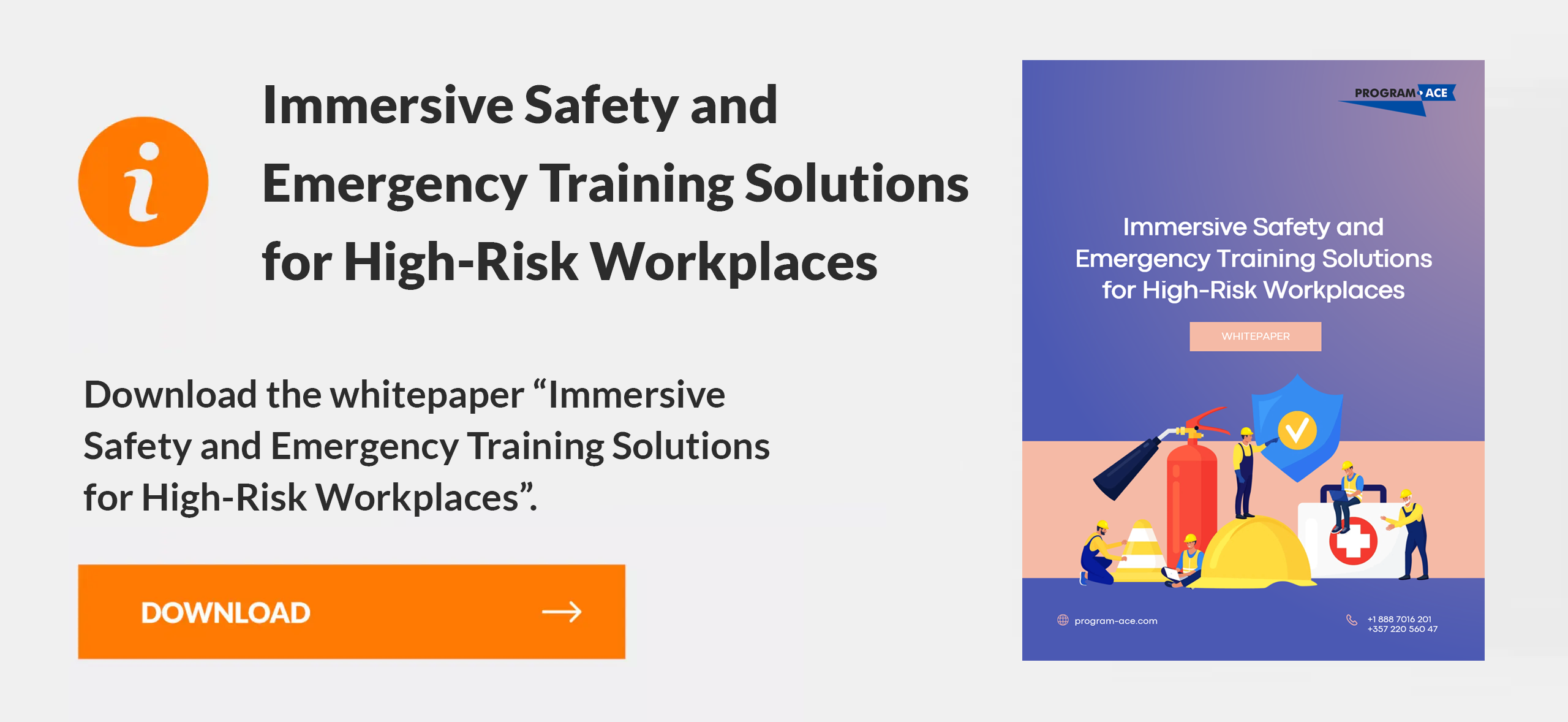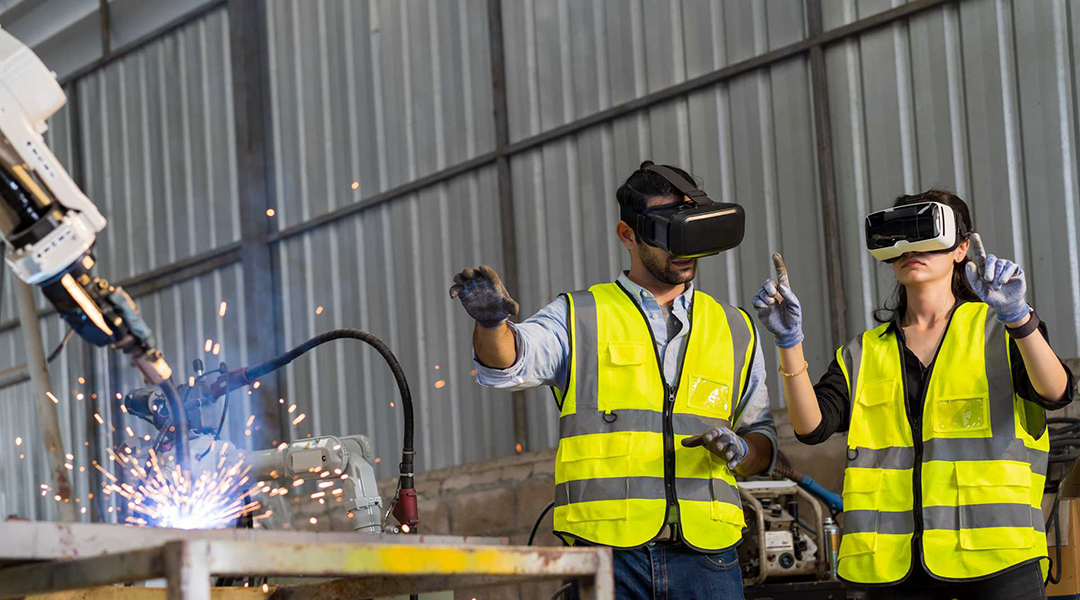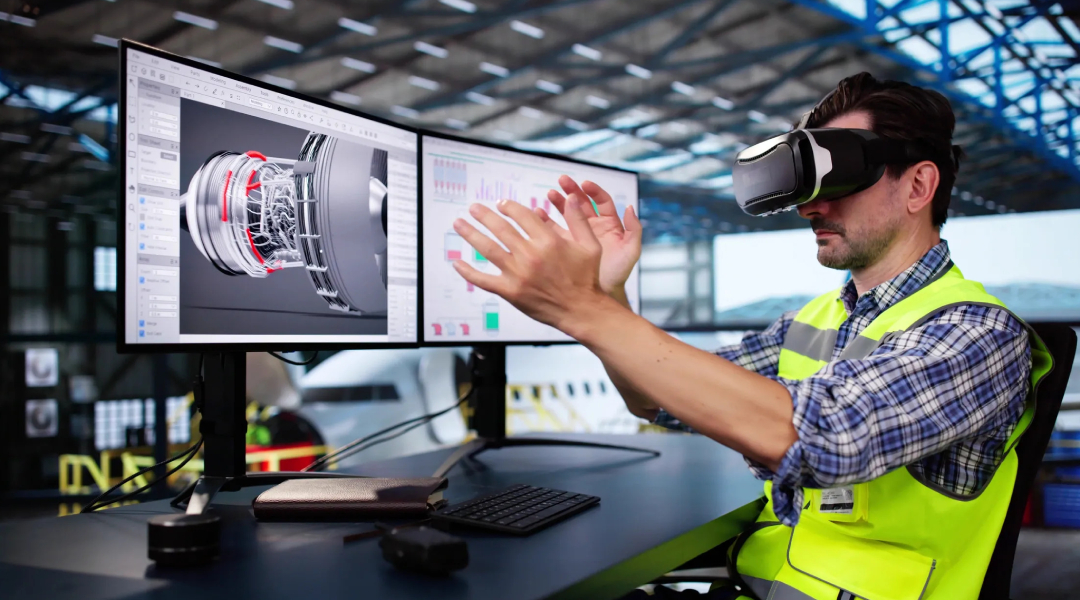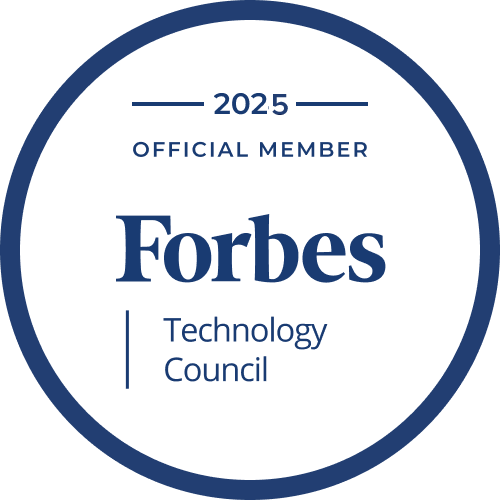For centuries, safety training in industries worldwide has remained largely unchanged, relying heavily on manuals, lectures, and in-person sessions. Every virtual reality safety training company operates to offer well-balanced training programs and compete on the market efficiently. While traditional methods have served their purpose, they often fall short in engagement and effectiveness. Today, forward-thinking enterprises are seeking innovative solutions to enhance their safety protocols, turning to virtual reality (VR) as a transformative tool.
VR-based safety training offers immersive, interactive experiences that significantly improve learning outcomes. A 2024 study published in Safety Science conducted a systematic review and meta-analysis, revealing that VR training outperformed traditional methods in 47 instances, matched them in 13, and was less effective in only one case. These findings highlight VR's potential to improve safety training by enhancing knowledge acquisition and retention.
If you aim to improve your organization's safety training through cutting-edge VR solutions, you are in the right place.
Why VR Safety Training Outperforms Traditional Methods
Many businesses hesitate to switch from conventional training to VR-based programs, assuming that long-established methods remain the most reliable. However, studies suggest otherwise. Virtual reality safety training offers several key advantages that make it far more effective than manuals, videos, and even hands-on training in controlled environments.
- Increased retention and engagement. Traditional training methods often lead to passive learning, while VR immerses employees in real-life scenarios.
- Eliminating real-world risks. For instance, VR enables chemical safety training and emergency response drills in simulated environments, ensuring safe practice without exposure to hazards.
- Faster learning curves. A PwC study found that employees trained using VR completed their training four times faster than those who used traditional methods.
- Scalability and cost savings. Once developed, a VR training program can be reused indefinitely, reducing long-term costs associated with instructor fees, travel expenses, and material updates.
Switching to VR-based safety training is not just a trend but a proven way to make workplace learning safer, more efficient, and more effective. Unlike passive learning methods that rely on memorization, VR enables employees to engage in real-time decision-making and hands-on practice, reinforcing skills through direct experience. Mistakes made in simulations carry no real-world consequences, allowing trainees to learn from errors without putting themselves or others at risk.
For businesses operating in high-risk environments, the ability to repeatedly train employees in hazardous scenarios without any danger is a game-changer. Workers can practice responding to fires, equipment malfunctions, or emergency evacuations in a controlled setting, ensuring that when real incidents occur, they know exactly how to react. Companies also benefit from reduced training costs over time, as once a VR program is developed, it can be used indefinitely with minimal updates.
As industries increasingly prioritize safety and compliance, VR training is quickly becoming a standard rather than an exception. The technology’s ability to provide scalable, repeatable, and measurable training ensures that organizations can keep pace with evolving safety regulations and workforce demands.
Businesses that adopt VR-based training early position themselves at the forefront of workplace safety, equipping their teams with the skills and confidence needed to perform their jobs effectively while minimizing risks.
Key Technologies Behind VR Safety Training
Developing a high-quality VR training program requires more than just a headset and a simulation. Several technologies work together to create an immersive and interactive experience:
-
VR headsets and motion tracking. Devices like the Meta Quest 3, HTC Vive, and Varjo XR-4 provide high-resolution visuals while motion-tracking sensors precisely capture user movements.
-
Haptic feedback systems. These wearable devices create physical sensations, allowing trainees to feel vibrations, pressure, or resistance when interacting with virtual objects.
-
AI-driven simulation engines. Artificial intelligence enhances VR training by adjusting scenarios based on the user’s actions, ensuring that each session is personalized and dynamic.
-
Cloud-based deployment. Some VR training programs are hosted on cloud servers, allowing businesses to roll out training remotely without extensive hardware investments.
Understanding the technology behind VR training solutions helps businesses make informed decisions when selecting a provider or developing their programs. Choosing the proper hardware, software, and development approach directly impacts a training program's effectiveness, scalability, and long-term viability. High-resolution VR headsets, accurate motion tracking, and AI-driven simulations create a more immersive learning experience, while cloud-based deployment ensures accessibility across multiple locations.
Investing in the right technology also means balancing cost and performance. Some companies may require high-end VR solutions with full-body motion tracking and haptic feedback. In contrast, others might benefit from standalone headsets that provide a practical yet more budget-friendly alternative.
The choice of a development engine, such as Unity or Unreal Engine, affects the flexibility and future expandability of the training program, making it crucial to work with developers who understand both the technical and practical requirements of the business.
A well-structured VR training solution enhances employee preparedness and provides measurable data on performance, helping businesses refine their training strategies over time. Companies that stay informed about advancements in VR technology can continuously improve their programs, ensuring that their workforce remains highly trained and ready for any challenge.
Tips for Finding a VR Training Development Company
The market of VR developers is thriving nowadays, so finding a company for such a project should not be an issue. However, finding a company with the right qualifications is a much bigger challenge. With luck, the tips below will help you find the best provider for your business needs.
1. Pay attention to professional portfolios
A portfolio of projects is one of the very first things to check once you establish contact with a company. Looking at past VR projects, you can not only examine the level of quality but also get a read on the scale of projects that a company is equipped to handle. Of course, a portfolio can’t tell you everything about professional experience, so be sure to inquire which tech stack the company relies on, which languages and frameworks it has mastered, which software/hardware it uses, etc.
2. Request a proposal
Some companies may be aggressive in convincing you to officially partner on a project, but you should hold your horses before you receive a proposal you like. This is a plan crafted by the provider, outlining how the company plans to tackle the project, including timeframes, people involved, cost estimates, communication and development flows, and a description of how your business needs will be met with this form of virtual reality for safety training.
3. Look for a second opinion
It is only natural for companies to show off their strengths and downplay/omit their weaknesses, so we recommend looking for a second and fair opinion about a company on third-party websites. Most IT companies have profiles on trusted platforms like Clutch and GoodFirms featuring honest reviews from real customers that have worked with the provider.
4. You can be picky about personnel
As the project initiator, you have the full right to choose who works on your project. Thus, you do not need to take a passive approach and just go along when a provider says “we have X specialists ready to help”. Before you begin any meaningful cooperation, you can sift through available specialists, examining their CVs and sometimes even picking favorites. Flexibility will depend on the provider.
5. Ask about different cooperation models
Most of the time, developers will offer you multiple cooperation models before you form an agreement. If they suit your needs, great, but if you feel any hesitancy over how well the model will serve you in the short/long term, you shouldn’t be afraid to think outside the box. Usually, if you ask a provider for a more flexible or tailored cooperation model, they will oblige. For example, you might ask for a fixed cost model for the MVP stages of the project, and then switch to a fixed-rate model after that.
6. Consider regional pricing
The rates offered to you by providers will be influenced by multiple factors (company expertise, project demands, etc.) but perhaps the biggest factor will be the country that the provider is operating from. It is well-known that developers in the U.S. and Central Europe have the highest rates in the world, while eastern and southern regions tend to have lower ones. Many businesses prefer cooperating with firms in Ukraine, as this country has a high number of experienced specialists and relatively low rates.
Be a front-runner with our virtual safety training solutions.
Industries Poised for VR Safety Training Growth in 2025
While sectors like construction and energy have already embraced VR for safety training, other industries are rapidly catching up. Here are three fields expected to see the biggest growth in VR safety training adoption next year:
- Healthcare. Medical training simulations for CPR, surgical techniques, and infection control are becoming standard, reducing errors and improving patient outcomes.
- Transportation and logistics. Companies like DHL and FedEx are investing in VR training for forklift operation, cargo handling, and driver safety to minimize warehouse and road accidents.
- Oil and gas. With inherently hazardous working conditions, the oil and gas industry is increasing its use of VR to train employees in emergency shutdown procedures, equipment maintenance, and fire safety protocols.
As more industries recognize the benefits of VR training, adoption will continue accelerating, making it a critical investment for businesses focused on safety and efficiency.
How Industries Have Used VR in Safety Training
If you have any doubts about the feasibility of implementing a training experience in VR, one of the best things you can do is look at real-world examples of these solutions in your industry. They can serve as a reference and occasional inspiration for your project. Below are some prominent examples of companies that have transformed employee education through VR:
1. Construction
CG Schmidt Inc., a construction company based in Wisconsin used a VR program to teach employees about safety hazards. Their virtual reality construction safety training was built to accommodate multiple users simultaneously, and placed workers in a construction site where they were asked to identify potential hazards. This allowed them to identify gaps in knowledge and demonstrate hazards through visualization.
2. Manufacturing
Program-Ace built an aircraft engine simulator that lets users assemble and disassemble a lifelike aircraft engine in VR. Normally, the process would be very straining and time-consuming, but the virtual experience makes it much clearer and easier to manage.
3. Energy
In the energy sector, virtual reality has become a vital tool for safety training. For example, DTEK, Ukraine's largest energy company, collaborated with Sensorama Lab to develop a VR training program for thermal power plant employees. This program immerses workers in a realistic 3D power plant simulation, allowing them to practice procedures and respond to emergencies without exposure to actual hazards. The initiative has enhanced safety and operational efficiency by providing hands-on experience in a controlled setting.
4. Agriculture
In 2024, Colorado State University initiated a project utilizing virtual reality to train dairy farm workers in proper personal protective equipment (PPE) usage. This immersive program allows participants to practice biosecurity and biosafety measures in a controlled, risk-free environment, enhancing their preparedness for real-world scenarios. The initiative aims to improve infection prevention and promote a safer working environment on dairy farms.
5. Retail
Woolworths, one of Australia’s largest supermarket chains, introduced a VR training program in 2024 to help employees handle aggressive customer behavior. The simulation puts staff in real-life scenarios, allowing them to practice de-escalation techniques in a safe and controlled environment. With workplace conflicts becoming more common, the company sees this as a way to prepare employees better while reducing risks on the job.
6) and many more…
These are just a few examples among hundreds. Even if you didn’t see an example similar to the project you are planning, this doesn’t mean that it’s impossible. With the right search criteria, you might be able to find a relevant example, and even if none exists, a qualified VR developer should be able to provide a professional opinion on the matter.
How to Get Started with VR Safety Training Software
When you find the right company to partner with, it will be a big burden off your back, but the next steps and overall requirements will still need input and effort from your side. To elaborate:
Estimations and discussions
Most software development projects go through a standard flow. At the start, a company discusses a project with a development partner, receives a favorable proposal, and finalizes a cooperation agreement (paperwork). It is quite difficult to pin down ballpark figures for cost and duration due to the unique requirements of each project.
Preparing materials and designs
Every training experience is based on some knowledge and skills that should be imparted to users, so it will be up to you to specify and share the needed knowledge/procedures. Similarly, the environment of the VR simulation will need to be taken into account, so if you want the setting to be a realistic depiction of a real site/building, you will also need to provide some visuals of this location.
Development and review
Next, the design and development work begin. Most developers prefer to work with an engine like Unity or Unreal Engine 5, along with SDKs best suited to the VR experience they are targeting. Traditionally, much of the development time goes into the creation of 3D models and interactions for them, as well as a tracking system that handles movement and interactions. To ensure that everything works smoothly, the software undergoes multiple rounds of review by QA specialists.
Release and Maintenance
When the project is complete, the client receives the full package of software and associated data. They are instructed on maintaining hardware needs like hosting and server-side operations, though some providers continue supporting and conducting maintenance for an application long after release.
What to Expect in the Future of VR Safety Training
The VR safety training industry is evolving rapidly, with new technologies and strategies shaping the next generation of training programs. Some key trends include:
- Wider adoption of mixed reality. Combining VR and AR, mixed reality overlays digital training elements onto the real world, enabling more interactive and context-aware learning experiences.
- AI-powered performance tracking. Machine learning algorithms are being integrated into VR training platforms to analyze user behavior and provide real-time feedback, helping employees refine their skills faster.
- Greater accessibility through web-based VR. Companies are moving away from expensive hardware-based training toward browser-accessible VR experiences, making training more flexible and scalable.
- Hyper-realistic digital twins. More companies are using digital twins — exact 3D replicas of real-world environments — to create hyper-accurate training simulations for industries like aviation, manufacturing, and healthcare.
With ongoing advancements, VR safety training will become more practical, affordable, and widely used across different industries. As hardware becomes lighter, software more intuitive, and costs continue to drop, more companies will integrate it into their training programs. Businesses that once saw VR as a luxury will begin using it as a standard tool for preparing employees for high-risk tasks.
New developments in artificial intelligence will make training sessions more interactive, adjusting scenarios based on a trainee’s performance in real-time. Mixed reality will also play a more prominent role, blending physical and virtual elements to create even more realistic learning environments. As adoption grows, companies will gain better insights from training data, allowing them to refine safety protocols and reduce workplace incidents more effectively than ever before.
Let Program-Ace Help You Skyrocket Your Training
Our company has decades of experience in building VR experiences for enterprises, and our product catalog features plenty of virtual training solutions. We’ve got all what it takes to empower businesses to better educate their workers and boost engagement all across the board.
Let’s talk about your project and discuss how it can be brought to life! Just send us a message, and we can get the ball rolling today.
























